How to Tell Wild Animals Summary Class 10 English First Flight Chapter 4
| Table of contents |

|
| About the Poet |

|
| Key Points of the Poem |

|
| Detailed Summary |

|
| Theme/Message |

|
| Literary Devices |

|
| Difficult Words |

|
About the Poet
Carolyn Wells, born in New Jersey, USA in 1862 and passing away in 1942, was deeply involved in writing from 1900 onward. She wrote over 170 books, including children's stories and detective novels. Her famous works include "Patty Fairfield," "A Nonsense Anthology," and "The Rubaiyat of Motor Car." She was praised for her witty and humorous writing style, evident in works like "How to Tell Wild Animals," where she creatively presents ideas to captivate readers.

Key Points of the Poem
- The poem humorously describes methods to identify wild animals based on their behavior.
- The Asian Lion is identified by its roar, which may be heard as you're "dyin'."
- The Bengal Tiger is recognized by its black stripes on yellow fur and its tendency to eat you.
- A Leopard has spotted skin and is relentless, leaping repeatedly.
- A Bear can be identified by its strong "hug," resembling a bearhug.
- The Crocodile is distinguished from the Hyena by their expressions—Hyenas "laugh" while Crocodiles "weep."
- The Chameleon is small, wingless, earless, and blends perfectly with its surroundings.
- The poem uses playful language and rhythm to create humor, with intentional wordplay like "lept" and "lep."
- It combines absurd situations with exaggerated traits of animals for comic effect.
Detailed Summary
Stanza 1
If ever you should go by chance
To jungles in the east;
And if there should to you advance
A large and tawny beast,
If he roars at you as you’re dyin’
You’ll know it is the Asian Lion…

The poet is telling the readers that how they can recognize various animals in the jungles of the east. So, in first stanza she says that if the reader comes across an animal whose skin is yellowish brown in colour and if it roars at him so strongly that he can die out of fear, it means that he has encountered an Asian Lion. She has humorously explained the Asian Lion which could kill a person with its roar.
Let's Revise: How can one identify an Asian Lion?
 View Answer
View Answer 
Ans: An Asian Lion has a tawny colour and a roar so loud it could make you feel like you're dying.
Stanza 2
Or if sometime when roaming round,
A noble wild beast greets you,
With black stripes on a yellow ground,
Just notice if he eats you.
This simple rule may help you learn
The Bengal Tiger to discern.
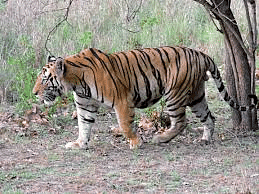
In this passage, the author describes a majestic animal that inhabits the jungle and is considered part of a noble lineage. This creature has a coat of yellowish hue adorned with striking black stripes. The author employs a darkly humorous tone as she explains that if one finds oneself in the unfortunate circumstance of being attacked and consumed by such an animal, it becomes rather moot to determine its precise species. In other words, the gruesome fate of being devoured renders the distinction between different wild animals irrelevant. The author's use of dark humor adds a layer of irony to the description, highlighting the grim reality of encountering such formidable predators in the wild.
Let's Revise
Q: What feature helps distinguish the Bengal Tiger?
 View Answer
View Answer 
Ans: The Bengal Tiger has black stripes on a yellow background.
Q: What tone does the poet use in describing the wild animals, and why?
 View Answer
View Answer 
Ans: The poet uses dark humor to describe the danger of encountering wild animals, making the grim subject more engaging.
Stanza 3
If strolling forth, a beast you view,
Whose hide with spots is peppered,
As soon as he has lept on you,
You’ll know it is the Leopard.
’Twill do no good to roar with pain,
He’ll only lep and lep again.
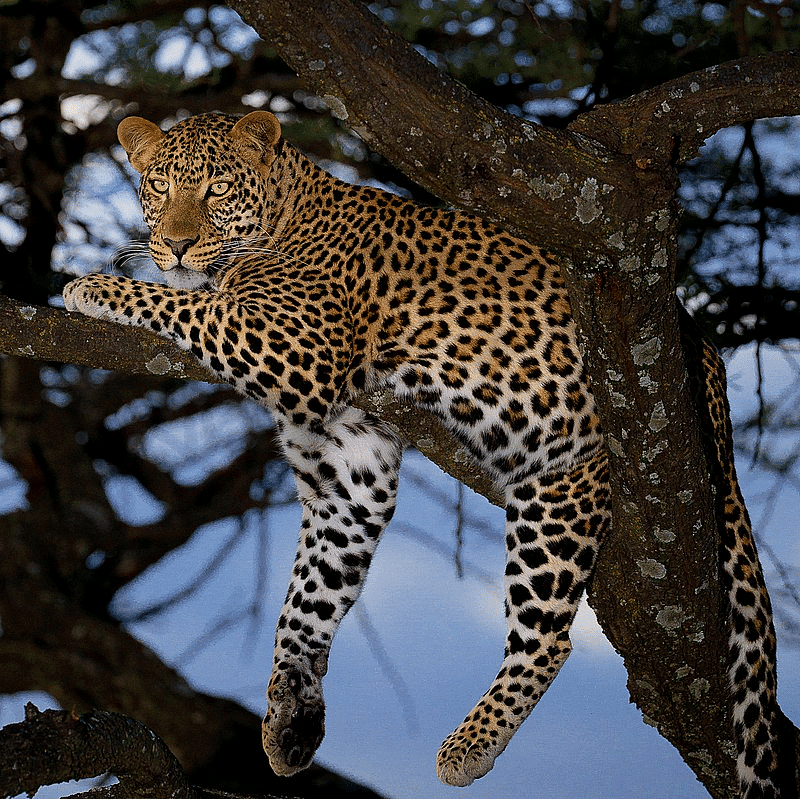
In this stanza, the poet describes a scenario where one encounters an animal while leisurely strolling through the jungle. This animal possesses a coat adorned with distinctive spots. The poet emphasizes the speed and agility of this creature, noting that it can swiftly leap upon its prey. This immediate pouncing action serves as a clear indicator of the animal's identity: it is unmistakably a leopard. Furthermore, the poet paints a vivid picture of the relentless nature of the leopard's attack, suggesting that even if one were to cry out in pain, it would be futile as the leopard would continue its assault without pause. Through this description, the poet effectively communicates the defining characteristics and behavior of the leopard in a manner that is both descriptive and engaging.
Let's Revise: How can one recognise a leopard ?
 View Answer
View Answer 
Ans: A leopard has a spotted hide and leaps swiftly on its prey, continuing to attack even if you cry in pain.
Stanza 4
If when you’re walking round your yard
You meet a creature there,
Who hugs you very, very hard,
Be sure it is a Bear.
If you have any doubts, I guess
He’ll give you just one more caress.
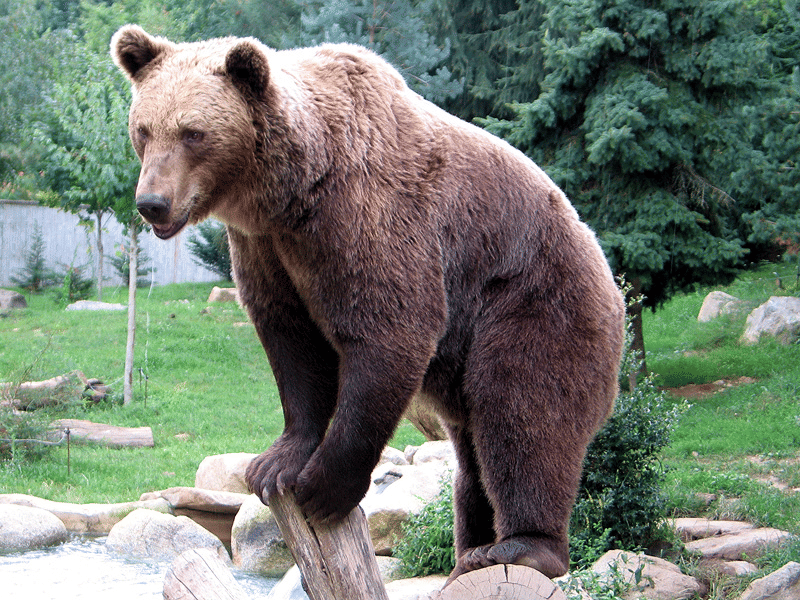
In this passage, the poet describes a situation where one encounters a creature while walking in the lawn area of their house. This creature exhibits a behavior of embracing tightly, resembling a warm hug. The poet asserts that this behavior is characteristic of a bear. Moreover, to dispel any lingering doubts about the animal's identity, the poet suggests that the creature will continue to embrace and touch the person gently. This gentle and affectionate behavior serves as a clear confirmation of the animal's identity as a bear. Through this description, the poet effectively conveys the distinct behavior of bears in a manner that is both clear and illustrative.
Let's Revise: What does the poet suggest is a sure sign that you’ve encountered a bear?
 View Answer
View Answer 
Ans: If a creature hugs you very tightly and then does it again, it is definitely a bear.
Stanza 5
Though to distinguish beasts of prey
A novice might nonplus,
The Crocodile you always may
Tell from the Hyena thus:
Hyenas come with merry smiles;
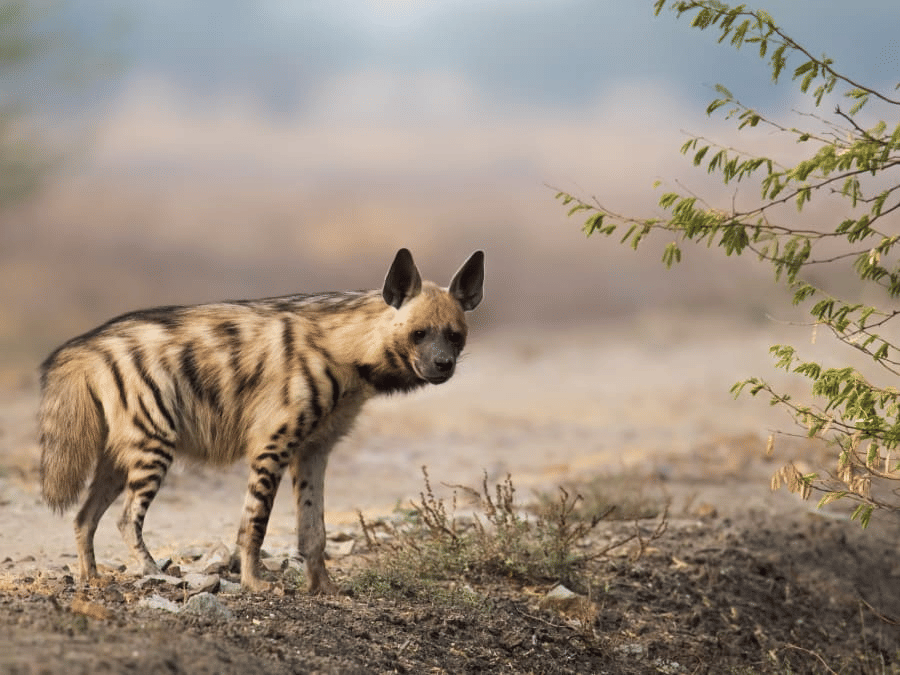
In this verse, the poet acknowledges the challenge faced by newcomers in identifying predatory animals. To aid readers in this task, the poet provides a distinction between two such animals. Firstly, the poet notes that hyenas, known for their predatory nature, typically appear to be smiling. Conversely, the poet describes crocodiles as always being in tears, emphasizing their menacing presence. Despite their differing physical characteristics, both animals are depicted as dangerous predators. By offering this comparison, the poet seeks to assist readers in distinguishing between these formidable creatures, thereby enhancing their understanding of the natural world and its potential hazards.
Let's Revise: How does the poet suggest one can distinguish a Hyena from a Crocodile?
 View Answer
View Answer 
Ans: A Hyena appears to be smiling, while a Crocodile is always in tears.
Stanza 6
The true Chameleon is small,
A lizard sort of thing;
He hasn’t any ears at all,
And not a single wing.
If there is nothing on the tree,
’Tis the chameleon you see.
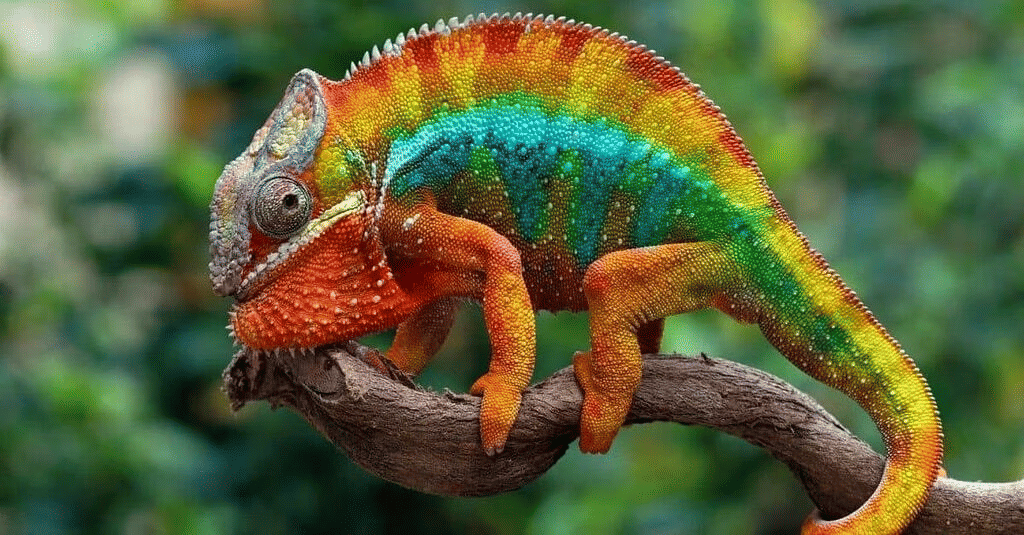
In this stanza, the poet introduces the chameleon, a small reptile often mistaken for a lizard. However, the poet highlights key differences between the two creatures: chameleons lack ears and wings. Furthermore, the poet describes the chameleon's remarkable ability to change its color to blend in with its surroundings. This adaptive skill allows the chameleon to camouflage itself effectively, making it virtually invisible to predators and unsuspecting passersby. As a result, if one were to encounter a tree devoid of other visible inhabitants, the poet suggests that it is likely a chameleon perched upon it. By seamlessly blending into its environment, the chameleon exemplifies nature's ingenuity and the marvels of adaptation. Through this description, the poet not only educates readers about the distinguishing features of the chameleon but also underscores the fascinating diversity of the natural world.
Let's Revise
Q: What are two physical features of a chameleon?
 View Answer
View Answer 
Ans: A chameleon has no ears and no wings.
Q: How can one recognise a chameleon on a tree?
 View Answer
View Answer 
Ans: If nothing is visible on the tree, it’s likely a chameleon blending into its surroundings.
Theme/Message
Theme
- The theme of the poem is how dangerous wild beasts can be. The poet suggests some dangerous and imaginative ways to identify the wild animals.
- The poem is full of humorous examples when the poet tries to distinguish one animal from the others. It is not safe to be close to the tigers and lions but the poet ironically suggests very risky ways to identify these animals.
Message
- Awareness and Caution: Through humor and vivid descriptions, the poem encourages readers to be aware of their surroundings and exercise caution when encountering wildlife, highlighting the potential dangers and unique traits of each animal.
- Adaptation and Survival: By showcasing the diverse adaptations of animals like the chameleon, the poem underscores the theme of adaptation and survival in the natural world, teaching readers about the remarkable abilities of different species to thrive in their environments.
Literary Devices
- Rhyme Scheme - The rhyme scheme of the poem is ‘ababcc’.
“If strolling forth, a beast you view. a
Whose hide with spots is peppered. b
As soon as he has lept on you. a
You’ll know it is the Leopard. b
‘Twill do no good to roar with pain. c
He’ll only lep and lep again.” c - Tone - The poet narrates the poem in a humorous tone.
Her descriptions of how animals like tiger, lion and leopard kill are intended to make us laugh.
Her statement about a bear hug is also an example of a humorous tone employed in the poem. - Imagery - The use of descriptive language by a poet or an author that helps the reader to visualise the pictures in one’s mind.
Example: The image of the Bengal tiger is created when we read the lines ‘A noble beast greets you, with black stripes with a yellow background. - Oxymoron - An oxymoron is a figure of speech that combines contradictory or opposite terms to create a new phrase that expresses a paradoxical idea.
The oxymoron is used in “noble wild beast”. The word “noble” implies a sense of honour, dignity, and grace, while “wild beast” suggests an untamed, savage animal. These two terms are contradictory and create a paradoxical expression, making it an oxymoron.
The same can be found in the phrase ‘true Chameleon‘. - Metaphor - This poetic device is used when a covert comparison is made between two different things or ideas.
In the poem, the metaphors have been used in an ironical way.
roar with pain – the painful voice compared ironically with the roar of a leopard
A noble wild beast – Ironically leopard is shown here as a noble one
the term ‘caress’ is used ironically for a bear’s claw attack. - Alliteration - Alliteration is the repetition of the same sound that is used in the beginning of the closely placed words.
The phrases ‘lep and lep again’, ‘roaming round’, ‘very, very hard’ and ‘novice might nonplus’ are examples of alliteration in the poem. - Repetition - Repetition is a poetic device that is used to repeat single words, phrases or even stanzas at intervals.
He’ll only lep and lep again.
Who hugs you very, very har - Personification - This poetic device is used to bestow human qualities on something that is not human.
The poet refers to the tiger not as ‘it’ but as ‘he’.
In the poem, the ‘hyena’ and ‘crocodile’ have been personified.
The human qualities of ‘smiling’ and ‘weeping’ have been given to the hyena and crocodile respectively. - Irony - Irony is a poetic device that is used by the poets to bring humour or satire on somebody or something. It is done by giving two meanings to a word or a phrase, i.e., surface meaning and underlying meaning.
A noble wild beast greets you.
He’ll give you just one more caress. - Poetic Licence - With the use of poetic licence, the poet not only maintains the rhyme scheme but also creates a humorous effect in the poem.
The poet has employed poetic licence in her use of language in the poem. In some stanzas, she has shortened words like ‘lept’, ‘lep’, and ‘dyin’. Also, certain sentences are framed differently in the poem like ‘novice might nonplus’ and ‘if strolling forth, a beast you view’.
Difficult Words
- Tawny: yellowish brown color
- Noble: high-born, aristocratic
- Discern: recognize
- Strolling: walking casually
- Peppered: Here it means the spots
- Lept (Leapt): jump towards someone
- Beast of Prey: Any animal that hunts other animals for food
- Novice: Someone new to a job
- Nonplus: be confused
- Leopard: a big cat of the tiger family
- Twill do no good: will not be of any use
- Hyena: a wild animal like a dog
- If they Weep: if the animals weep
- Chameleon: a lizard-like small creature
- In the east: in the eastern regions
- Advance: coming towards
- Large: huge
|
61 videos|620 docs|69 tests
|
FAQs on How to Tell Wild Animals Summary Class 10 English First Flight Chapter 4
| 1. What is the main theme of the poem "How to Tell Wild Animals"? |  |
| 2. Who is the poet of "How to Tell Wild Animals"? |  |
| 3. What literary devices are used in "How to Tell Wild Animals"? |  |
| 4. Can you provide a summary of "How to Tell Wild Animals"? |  |
| 5. What message does "How to Tell Wild Animals" convey about nature? |  |
















